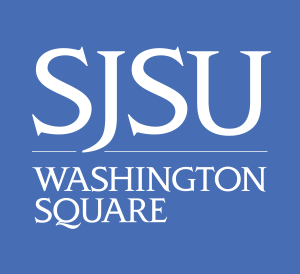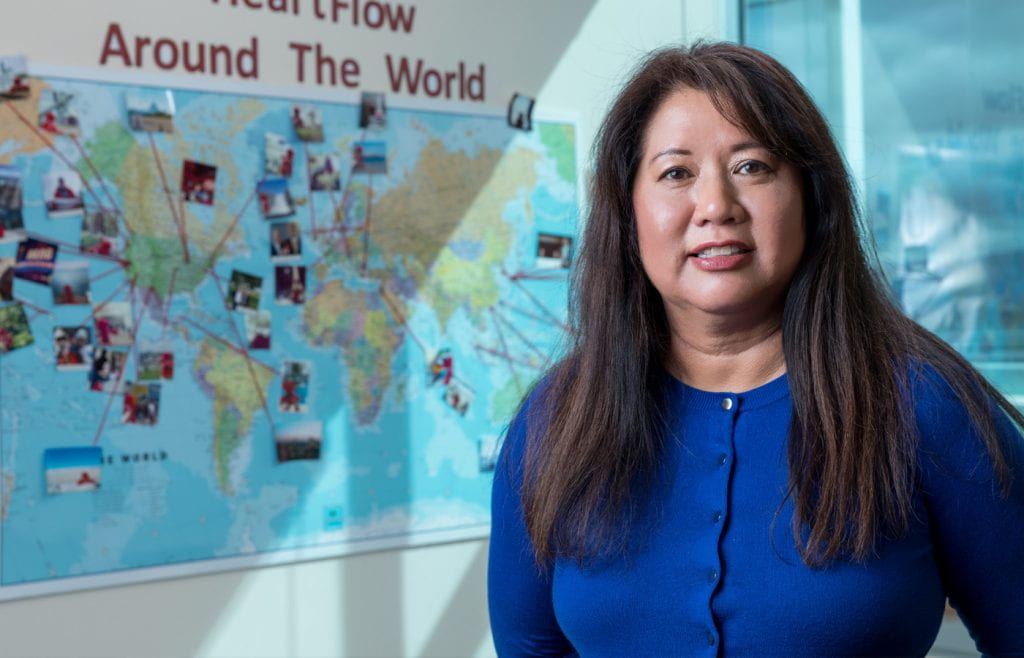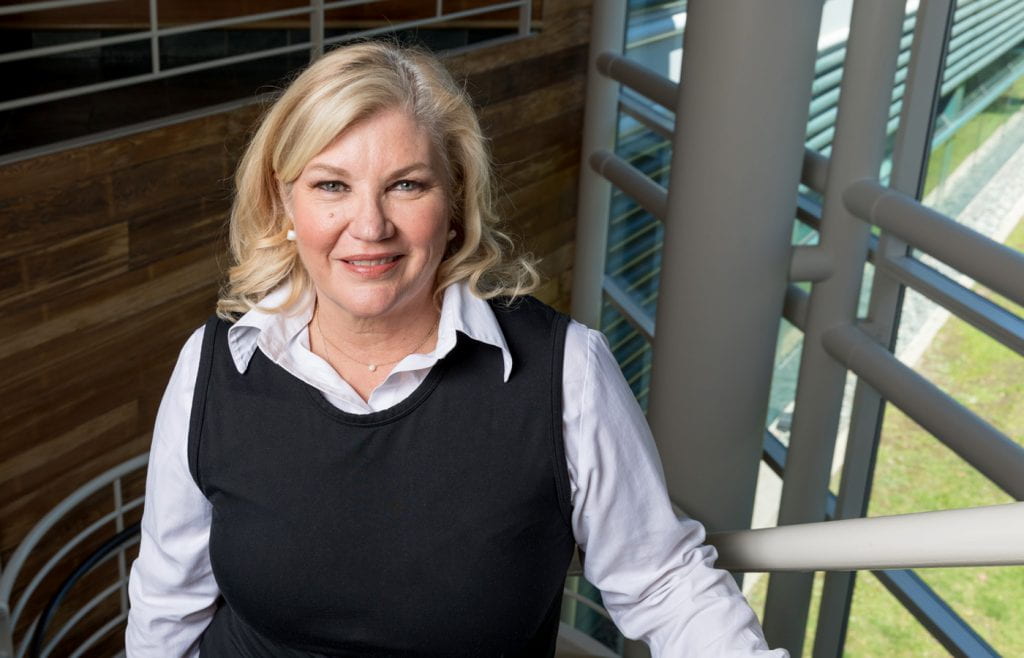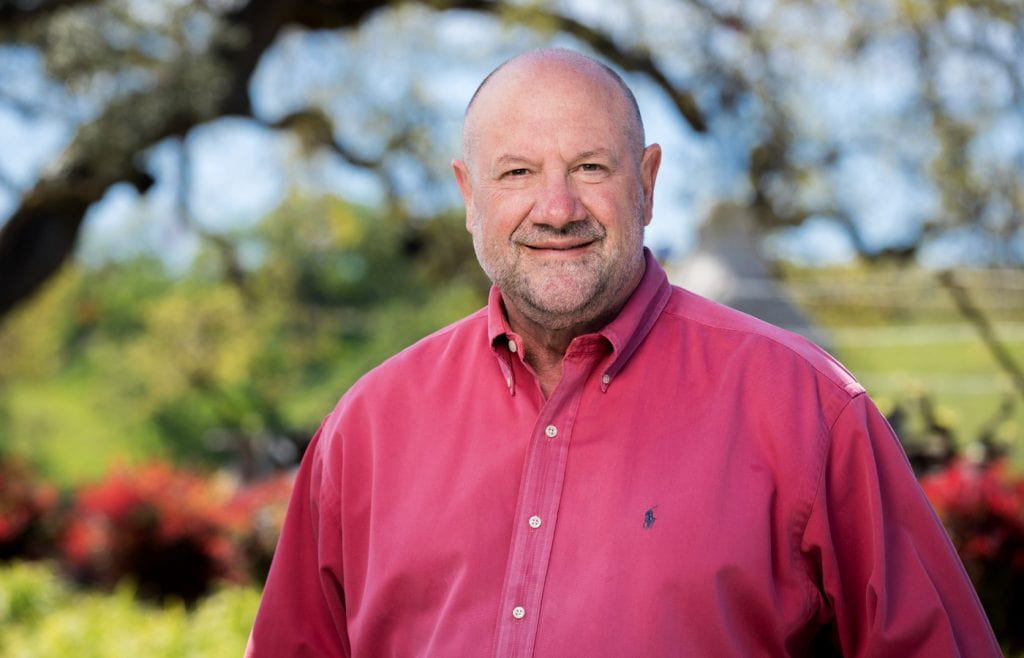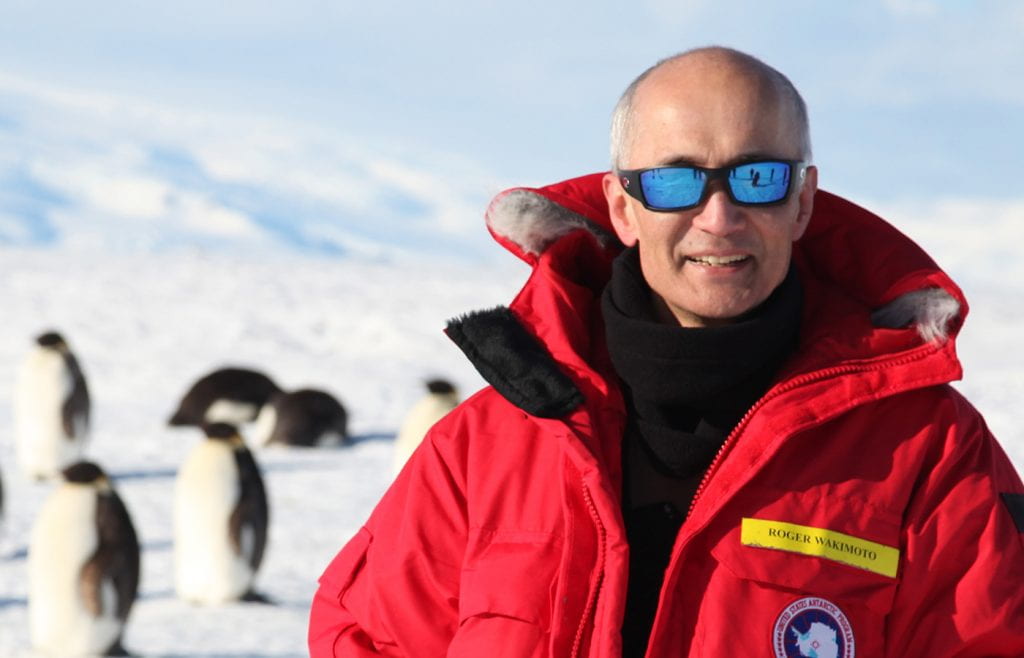Where Research Leads
For many in industry, research is a way of life. Nowhere is this truer than in Silicon Valley, where innovators of every stripe race to develop cutting-edge solutions in sectors from healthcare and technology to transportation and environmental protection. San Jose State operates in the heart of this environment, educating students and engaging the surrounding community in collaborative exchanges that connect theory with practice in impactful ways.
Now the university is embarking on a new strategic endeavor to enhance its culture of research and foster transformative change across disciplines. As the following alumni profiles reveal, however, San Jose State has been successfully engaged in this work for decades. From meteorology to medicine, these high achievers have leveraged student research opportunities and connections with faculty members and industry professionals to maximize their educational experiences, evolve in their careers and make profound impacts in their chosen fields.
Noemi “Nicky” Espinosa
At San Jose State, Noemi “Nicky” Espinosa, ’81 Chemical Engineering, participated in a work/study internship with General Electric’s Edison Training Program. “I was assigned to the Nuclear Energy Business Group and liked it so much I decided to pursue a master’s in nuclear engineering,” she recalls. “Then the disaster at Three-Mile Island happened.”
The Nuclear Regulatory Commission turned to GE’s nuclear engineers for answers and Espinosa worked with them to run simulations and assess the data. “I learned a lot about what it was like to work as an engineer in the corporate world, and I also got the sense that the lawyers and regulators had more power in such situations than the engineers did. The experience got me thinking about my career options.”
Espinosa abandoned plans to pursue her masters in nuclear engineering and opted for a career in law. “After the accident, no one was interested in a nuclear engineering degree anymore.” She did, however, remain in the sciences, spending 20 years as a private litigator representing life science and technology companies, then serving as vice president of legal operations for medical robotics maker Intuitive Surgical.
Today, Espinosa is general counsel, chief ethics and compliance officer for HeartFlow, a Redwood City-based medical technology company that assists physicians in diagnosing and treating cardiovascular disease. “My engineering degree has helped me throughout my career. I enjoy math and science—I understand the technology and I’m not intimidated by it. In fact, I’ve heard from my boss, the CEO, that one of the reasons I stood out as a candidate for general counsel was a little line in my résumé about computational fluid dynamics. The executive team was thrilled that I understood this concept, as fluid dynamics are a critical component of HeartFlow analytics. It always helps to have something that differentiates you from the crowd of qualified lawyers!”
Interdisciplinary knowledge such as this is commonplace, particularly in biotech, Espinosa continues. The more that students can do to enhance their knowledge base across disciplines, the better. “For example, I would love to see more cross-pollination between San Jose State’s fantastic nursing program and the engineering department. Allow engineers to take physiology classes so they understand the body. Encourage nursing students to take computer science classes so they understand how databases work.
“San Jose State is geographically situated in the perfect location to promote a culture of research,” Espinosa concludes, “and the more the university can do to integrate what’s happening in Silicon Valley with what’s happening on campus, the better it will be.”
Laura Guio
Technology executive Laura Guio, ’86 Marketing, has worked in Silicon Valley for 30 years, although she didn’t graduate with a degree in engineering—marriage and a new baby on the way her final year of college pushed her to a degree in marketing. Nevertheless, she asserts her engineering coursework served her well. “After graduation, I spent 18 months at home with my daughter, then applied for a job at IBM. I had to go to a company school for three months to prove that I had the education needed to handle the work, which I did, and I was on my way.”
Guio spent the first 15 years of her career at IBM on the engineering side of the business, then began leading worldwide sales for product lines she had previously been charged with developing. Today, she is responsible for business line management, including investments. “I’m very lucky to have had the career I’ve had—I’ve been able to work in many different business sectors under the umbrella of a single company.”
She asserts that she has realized success because she understands both the science and business behind her job. “I began working alongside researchers, then moved to a part of the company where products were developed and sold. That range of experience has given me the ability to take an idea from conception to market. I know how important it is to keep asking, ‘What is the need in society for what I’m developing?’”
Currently the general manager for the company’s Global Cisco Alliance, Guio now works across every business unit in which IBM partners with Cisco. “To do my job well, I have to understand all the subsets of that business—research, development, sales, investment—and know who to contact to get a job done.”
Guio credits San Jose State for teaching her how to work with both theoretical and applied knowledge. “The university allows students to integrate education and life by facilitating internships and night classes and bringing professionals into the classroom.” As a student, Guio says, she had many engineering professors who were professionals on sabbaticals from their corporate jobs. “Talk about bringing real life into the university world—these individuals gave us wonderful perspective on what life is like for a practicing engineer. When I entered the workforce, I wasn’t surprised. I understood how to apply my classroom knowledge to real-world situations.”
David Persing
David Persing, ’79 Biochemistry, was drawn to San Jose State by his high school music teacher, but quickly realized he was not cut out for a career in music. “I didn’t have the raw talent or the will to practice four to six hours a day to become a professional trombone player,” he confesses.
What’s more, says Persing, he had discovered a love for medicine while on a church mission trip to Guatemala. “We were building a school in a remote village and I got to know the local doctor. He introduced me to basic healthcare needs in the area—I watched him delivering breech babies, treating parasitic infections and dealing with malnutrition … real jungle medicine. I loved it and returned to college with renewed focus.”
Persing graduated with a degree in biochemistry, then completed an MD as well as a PhD in genetics. “I received an excellent scientific education at San Jose State, which positioned me for success in medical school,” he observes. “The strong focus on teaching, with courses taught by full professors, was incredibly beneficial, as were the close relationships with faculty members. In fact, my research project, with genetics professor Robert Fowler, ‘Mutational specificity of the base analogue, 2-aminopurine, in E. coli,’ led to a publication for me in Mutation Research—a big deal for an undergraduate.”
Persing went on to found and direct the Mayo Clinic’s Molecular Microbiology Laboratory, the first facility dedicated to the revolutionary technique of Polymerase Chain Reaction (PCR), then left academia to pursue translational research in cancer and infectious diseases in the biotech world. “It was gratifying to treat one patient at a time, but I ultimately decided I needed to amplify the impact of my research and touch the lives of many people simultaneously.”
Today, Persing serves as executive vice president, chief medical and technology officer for Cepheid and is impacting lives on a scale he only dreamed of 20 years ago. “We have more than 21,000 systems out in the world doing molecular genetic testing,” he notes. “We’re making genetic tests for diseases like TB and HIV affordable and actionable in far-flung locations, and their medical value to providers is quite high because the results are quickly accessible.”
Innovation such as this takes place at a rapid-fire pace, says Persing, making it doubly important for students to diversify their knowledge and pursue every opportunity for practical experience. He’s confident San Jose State is up to the task. “The university is starting from a position of strength as an outstanding teaching institution—adding a research component can only increase the value proposition for students.”
Roger Wakimoto
Atmospheric scientist Roger Wakimoto, ’76 Meteorology, was an undeclared major when he arrived at San Jose State, but a pivotal summer internship with then-Chair of Meteorology Albert Miller changed all that. “Professor Miller exposed me to the research he was doing on data gathered from instruments placed on San Francisco’s Sutro Tower,” Wakimoto recalls. “Up to that point, I had no idea what research entailed, so it was exciting to try something new.”
When Wakimoto showed an aptitude for the work, department faculty members encouraged him to pursue a PhD in geophysical sciences at the University of Chicago. “I wasn’t sure I was sufficiently prepared for the rigorous academic coursework that I knew I would experience in graduate school at a private university, but I quickly realized that the faculty members at San Jose State had taught me exceptionally well.”
Wakimoto completed his doctoral dissertation under the guidance of Ted Fujita, creator of the famed Fujita or F-Scale, a system of classifying tornado intensity based on damage to structures and vegetation. Wakimoto moved on to leadership roles at the National Center for Atmospheric Research and the National Science Foundation Directorate for Geosciences. Today he is UCLA’s vice chancellor for research and a well-known figure in mesoscale meteorology, with a special interest in severe convective storms like tornadoes. “I’m biased, but I believe that my efforts to understand our environment impacts not only our future but that of coming generations,” he observes.
“Research is one of the greatest contributions that a university can give to a community,” says Wakimoto. But, he continues, it must not take place at the expense of education. “It’s important for the university to give students foundational skills, whatever their field of study. I’m confident that San Jose State will keep the big picture in mind as it augments its teaching mission with this new research focus.”
